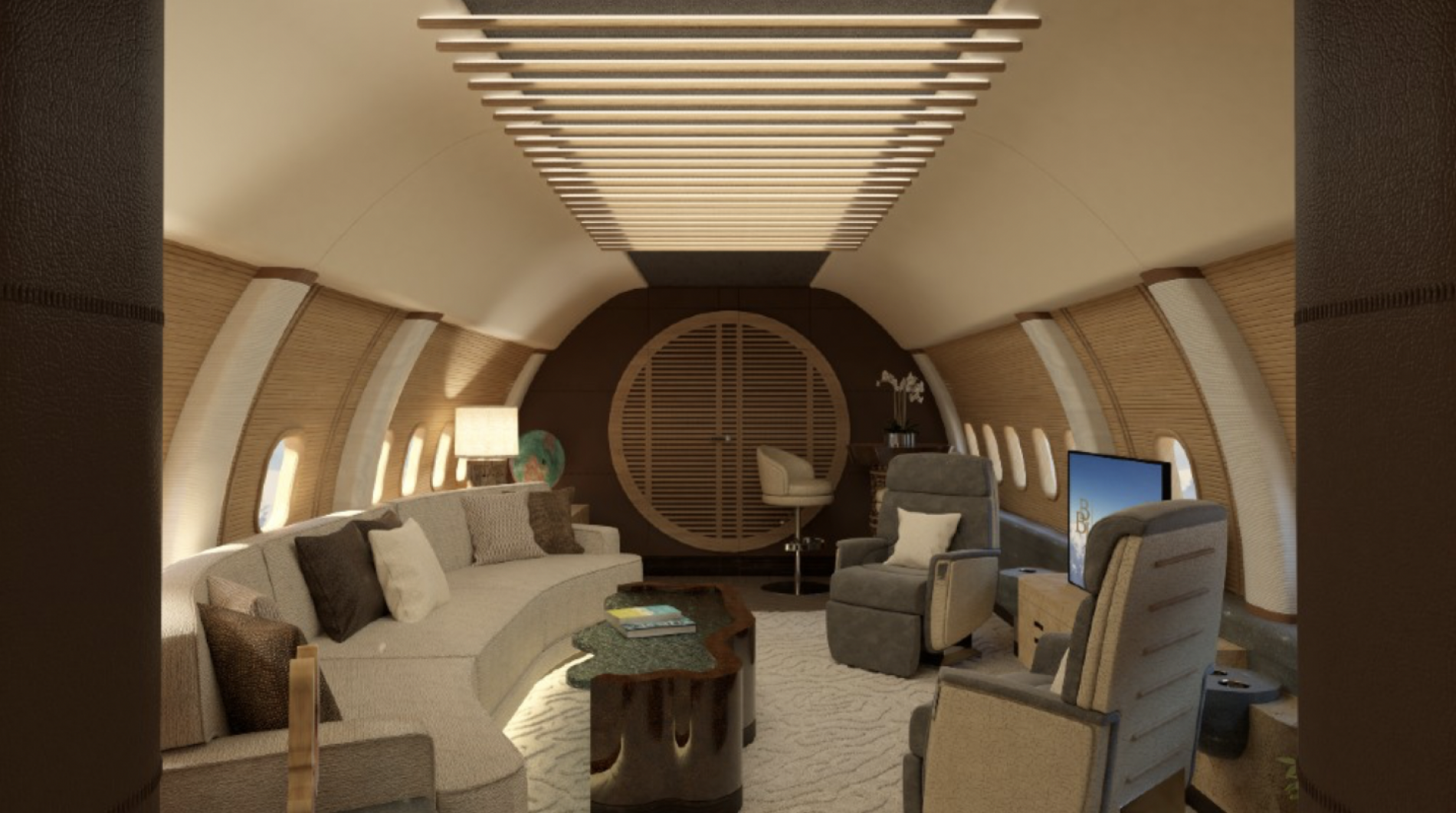Mark Berryman's calming interior avoids the glitzy, tech look of many cabins. The goal is to make owners feel like they're not on an airplane.
Cross-pollination is a growing trend in the design world. Perhaps pushed by the pandemic, designers have been moving into other fields. Those who traditionally worked on jets are now taking on yacht projects and a few yacht designers are getting into jets.
“I always think it’s a good thing when new people come into the field,” says British yacht designer Mark Berryman, who has been working for more than 25 years in the marine field, including designing last year’s major launch, Lürssen’s 446-foot Flying Fox. “Newcomers ask different questions, find different answers, and spread new ideas that can push the industry forward.”
Berryman recently completed his first interior jet concepts. The synergies between yachts and private jets, he discovered, were many. Berryman says he never actually understood the divide, especially when clients who liked his work on their yachts would tell him: “Too bad you can’t do my jet, too.” It turns out he could.
The designer’s initial foray comes via a partnership with Boeing Business Jets, which worked with Berryman to produce two spec layouts for the BBJ737, one aimed at private use and one for corporate purposes. “There was a little bit of trial and error, but BBJ was keen to let us have a go and they were very open to our questions,” Berryman says. “Even with yachts, there’s still a learning process. The question became whether you could come up with clever ways to solve the problems.”
In the end, Berryman felt he and his team successfully transmitted their sensibilities to the new space. That includes soft warm colors and “subtle Asian accents” that create a relaxed feeling. The interior of the personal jet included an owner’s suite with foyer, office, bedroom and bathroom. The goal was to create an environment that didn’t feel like an airplane.
“Most of what we saw when we looked around were very high-tech, sleek designs,” Berryman says. “They look great, but it’s not necessarily something you want for a 14- or 15-hour flight. We wanted people to feel like they could relax and put their feet up.”
Beyond the aesthetics, the designers considered practicality. “We spent a lot of time on the flexibility of spaces, things that could serve three of four purposes on one journey, and multifunctional spaces that are easy to convert,” Berryman says.
In the corporate version of the Boeing Business Jet, the touches include more of an open layout and up to 12 work stations that convert to beds. On the personal-use design, Berryman’s team used more bulkheads, which create niches, a sense of privacy and provide places for art.
The designs serve as starting points for conversations with clients, a means to convey a general approach and overall feel that can be customized in myriad ways. For Berryman, it’s further proof that a successful signature look and sensibility can be applied across multiple platforms. “Design is design,” he says. “If you asked me to do a telephone booth, I’d be as happy as doing a yacht.”
Of course, it would probably be the most elegant telephone booth ever designed, though that might be taking cross-pollination a step too far.
©robbreport

